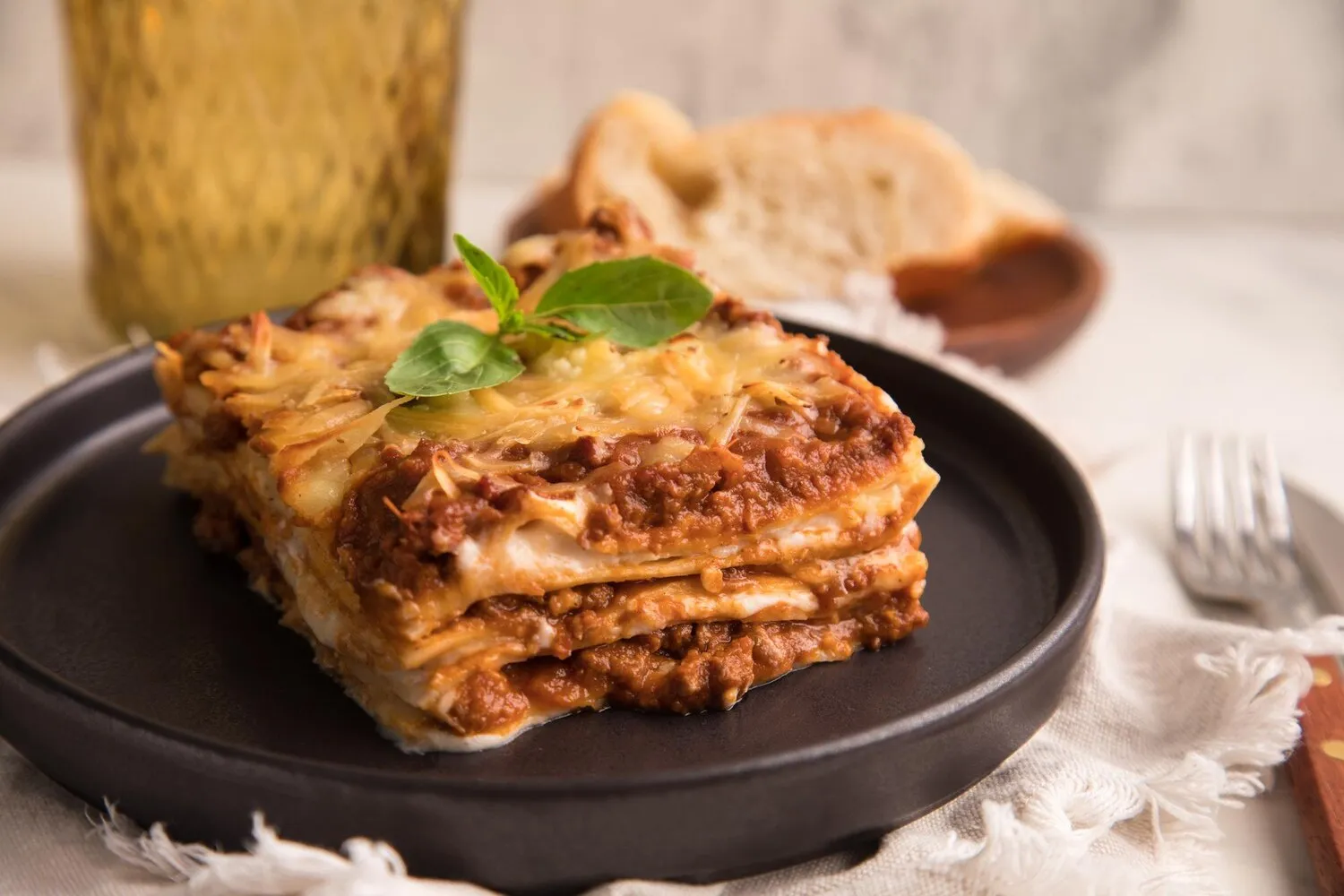
Lasagna
Baked pasta dish with layers of pasta sheets, meat sauce, cheese, and béchamel sauce.
Nutrition Facts
* The % Daily Value (DV) tells you how much a nutrient in a serving of food contributes to a daily diet. 2,000 calories a day is used for general nutrition advice.
Lasagna's origins are debated, with some tracing it back to ancient Greece and Rome. However, the modern layered pasta dish we know today is believed to have evolved in the Naples region of Italy during the Middle Ages. Early versions were simpler, but over time, they incorporated more complex sauces, meats, and cheeses.
Lasagna holds a significant place in Italian culinary culture, often associated with family gatherings, celebrations, and comfort food.
Family Tradition
Lasagna is often a dish passed down through generations, with family recipes varying considerably. Making lasagna is often a collaborative family activity.
Celebratory Dish
It is commonly served during holidays like Christmas and Easter, as well as for other special occasions.
Regional Variations
Different regions of Italy have their own unique versions of lasagna. For example, in Northern Italy, lasagna is often made with béchamel sauce, while in Southern Italy, ricotta cheese is more common.
Lasagna offers a rich and savory flavor profile, characterized by a harmonious blend of pasta, meat sauce, cheese, and often béchamel.
The predominant flavors are savory and umami, derived from the meat sauce (typically made with ground beef or pork, tomatoes, onions, garlic, and herbs like oregano and basil). The ricotta cheese provides a creamy, slightly tangy counterpoint, while the mozzarella melts into a gooey, cheesy layer. Béchamel sauce, if used, adds richness and a velvety texture. The baked pasta sheets absorb the flavors, creating a cohesive and satisfying dish.
Sauce Consistency
Ensure the meat sauce isn't too watery, as this can make the lasagna soggy. Simmer it long enough to reduce the liquid.
Cheese Quality
Use high-quality ricotta and mozzarella for the best flavor and texture. Freshly grated Parmesan or Pecorino Romano adds a sharp, salty finish.
Noodle Preparation
While no-boil noodles are convenient, par-boiling regular lasagna noodles can improve the texture and prevent them from being too chewy or hard in the final dish. Follow package instructions for specific cooking times.
Resting Period
Allow the lasagna to rest for at least 15-20 minutes after baking before slicing and serving. This allows the layers to set and the flavors to meld together.
Explore additional Italian dishes and restaurants
Explore ItalianDiscover top dining spots and culinary experiences in Helmond.
Explore HelmondLearn more about the food culture, restaurant scene, and culinary heritage of Netherlands.
Explore Netherlands
